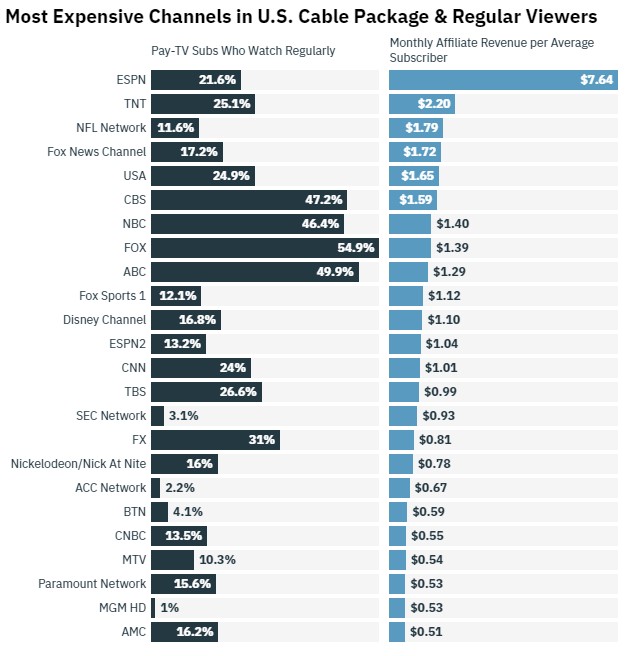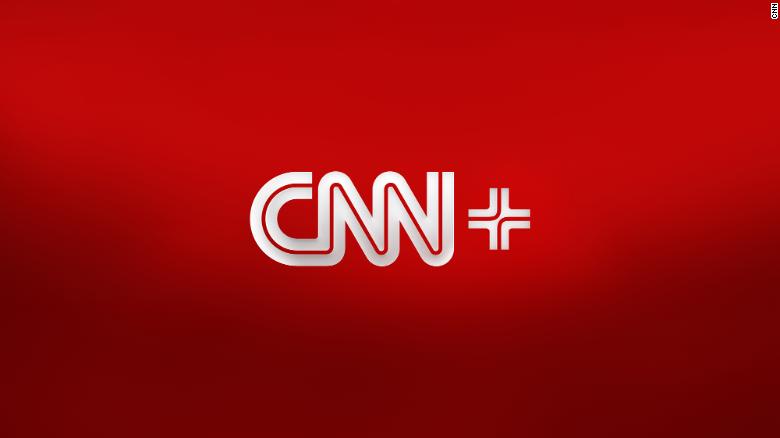It’s interesting to see that CNN is launching a new subscription streaming service which it is imaginatively titling CNN+, because all streaming services from “legacy” providers have indicate that they’re streaming by adding that “+”.
The service will launch in 2022 and will co-exist with CNN’s existing brands including CNN and CNN International. But there won’t be an overlap between them. That’s because, as CNN’s own report explains:
“CNN can’t just sell its current live programming via streaming due to lucrative and long-term deals with cable distributors. The company generates more than a billion dollars in profit annually, largely from cable subscriber fees and advertising.”
This is the challenge that existing cable channels like CNN face as we move into a predominantly streaming world.
In the US, revenues are driven heavily by the cable bundle. A subscriber pays a fixed fee to their cable company, who provide a bundle of channels to that subscriber. The cable company in turn negotiates with the channels themselves for which channels they include in their bundle, and how much of that subscription fee is payable to those channels. It’s a negotiation, and sometimes there are hold-outs with channels being pulled from platforms while those negotiations are drawn out.
Variety recently published a helpful table that details many of these affiliate fees as they are known in the industry.

WIZER DATA FIELDED FOR VARIETY INTELLIGENCE PLATFORM BETWEEN SEPT. 28-OCT. 4, 2020 TO A SAMPLE OF 1,336 RESPONDENTS AGED 18-64 WITH A PAY TV SUBSCRIPTION
At the top of the list is ESPN which earns $7.64 per subscriber. You may think that’s cheap for a premium sports channel if you compare that price with what Sky Sports or BT Sport charge in the UK. But the difference here is that most cable homes will get ESPN regardless of whether they like sport at all. The channel is included many basic channel packages – it’s not priced as an add-on. So if you don’t care about sport at all, nearly $8 of your monthly cable fee is going to ESPN regardless. The fee per subscriber is lower because millions more homes are getting the channel. In the UK, far fewer homes get, say, Sky Sports, so the fees per subscriber are higher to accommodate the rights and productions costs. The US system is generally a good deal for the sports fan, but a bad deal for non-sports fans.
Anyway, you can see that CNN gets just over $1 per subscriber (Fox News makes more at $1.72). If you multiply that up by maybe 80-90m cable homes, you can suddenly see how valuable these channels are before you include any advertising revenues on top.
How much a channel gets will depend on the popularity of its programming and what the cable companies think they can get away with. If customers are going to switch providers because their favourite channels aren’t in the bundle offerings, then perhaps the cable company should include them.
I suspect that as younger people cut the cords, or become so-called “cable-nevers” (i.e. they’ve never had cable TV and are unlikely to ever get it since they stream everything), the fees achieved will skew towards those who do pay for cable TV – i.e. older viewers – and channels that accommodate them. Look at Fox News whose viewers’ median age is 65. Those are viewers that will probably hang onto cable and not cut the cord.
When cable companies and channels do their distribution deals, the cable companies demand exclusivity. That is, they don’t want channels to be able to offer programming that allows viewers to “work around” cable distribution, and get it elsewhere. And that’s why CNN+ won’t just be an online version of CNN.
If CNN upsets the apple cart by offering the same output directly, then cable companies won’t pay that $1.01 fee. In the best instance, it’ll be reduced; in the worst instance they just wouldn’t carry CNN at all.
This is the battle that channels that have relied heavily on cable hitherto are having to face.
Look at ESPN and its streaming sibling ESPN+ (available in a bundle with fellow Disney streaming products, Disney+ and Hulu). It’s ESPN that carries all the big live sports – from NFL to NBA and beyond. Sure, there’s some decent stuff on ESPN+, but it skews towards more niche sport (for US audiences anyway), like La Liga and EFL football, or college sports. Popular enough – but not the really big hitters.
ESPN remains immensely profitable, but Disney knows that won’t be the case forever. But right now, they’ll continue to take what they can from cable, knowing that at sometime down the line things will flip, and ESPN+ will become the bigger part of the empire. The question is when?
Returning to the CNN+ announcement, it’s worth recalling that WarnerMedia and Discovery are in the process of merging right now, subject to regulatory approval. Between them, they’ll have a number of streaming offerings from HBO Max, to Discovery+ and now CNN+. You would surely expect that in time, these will be bundled in some way.
But I’m also interested to see how all these channels roll out globally. CNN+ will be US only in the first instance. Discovery+ is already rolling out globally – it’s here in Britain as the bus-side adverts I keep seeing point out. And HBO Max isn’t here, and won’t be for a while since Sky still has an output deal for much of the main HBO channel’s programming which finds its way variously onto Sky Atlantic, Sky Documentaries and Sky Comedy.
To be honest, while launching CNN+ is probably the right move, it’s hard to see how it’s going to be a compelling viewing experience initially.

